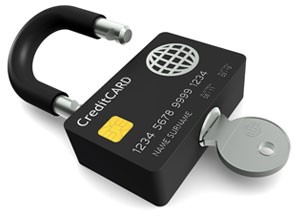Semalt: What Is Payment Fraud And How To Avoid It?

Payment fraud refers to any form of an illegal or false transaction executed by a cyber criminal. The scammer acquires personal data, funds, and other parameters of interest from the victim.
Oliver King, the Customer Success Manager of Semalt, shares valuable concepts that will help you tackle online attacks.
The following are ways through which payment fraud is executed:
- Stolen or lost merchandise.
- Unauthorized or fraudulent transactions.
- Bounced or return checks, counterfeit requests for a refund.
E-commerce organizations depend on electronic transactions to request payment from customers. As such, the number of electronic transactions has increased prompting the scaling up of fraudulent activities.
The various type of payment fraud include:

Phishing:
Identity theft:
Pagejacking:
Wire transfer and advanced fee scams:
Merchant identity fraud:
Any online platform that needs personal data such as bank account or a credit card is at the risk of this attack. In the source is legit, for instance, a spouse with a bank, the platform is trustworthy. But, in case the source is not well known, it could depict an intervention of acquiring data illegally.
It is a common type of fraud that occurs beyond the scope of the digital realm. It occurs when an individual impersonates another person and uses his/her data to execute certain crimes. Identity crime is mostly executed by using public Wi-Fi as a channel of hijacking login credentials.
It occurs when a hacker hijacks a section of your e-commerce site and directs web users to a different platform. The unwanted website in most cases is dominated by malicious materials that scammers use to find their way to a network security system.
Hackers target e-commerce owners and credit card users by requesting for money prior to delivery of a credit card or cash at a later period.

This type of fraud occurs when hackers open up a merchant account in place of a seemingly legit organization and make a return from stolen credit cards. The scammers then close down the accounts before the cardholders realize that fake payments.
How does a fraud occur?
Fraudsters have perfected in the act of illegally acquiring information online. In most cases, the hackers pretend to be genuine representative and phone credit card holders requesting for sensitive data. Subsequently, they use the following approaches to interaction to extract personal information.
- Phone calls
- Instant messaging
- Texting malware to gadgets
- Rechanneling traffic to fake sites
Cyber thieves also team up to access network security systems by locating patches or glitches that are not to date. The presence of these gaps enables the hackers to obtain information in presence of a firewall.

How can e-commerce organizations alleviate fraud?
It is difficult to completely eliminate the danger posed by fraud on your e-commerce store. You can adopt the following measures to safeguard your business against payment fraud:
- Join hands with a proved payment processor.
- Design a policy revolving around access to critical data.
- Conduct a security check on a frequent basis using anti-virus software.
- Ensure that client's login into a personal account before making a purchase.
- Ensure that login data and tokens are changed on a regular basis.
Payment fraud is detrimental to you and your client. By belligerently safeguarding your e-commerce site against fraud, you can better the credibility of your business.